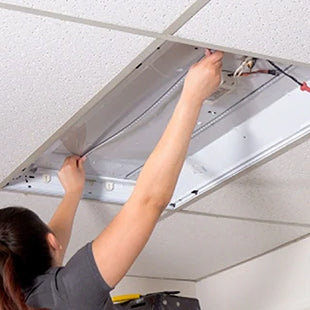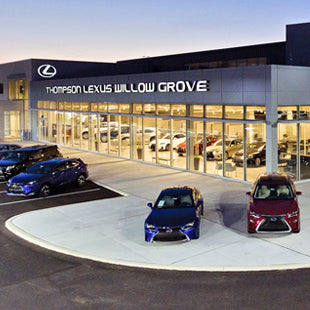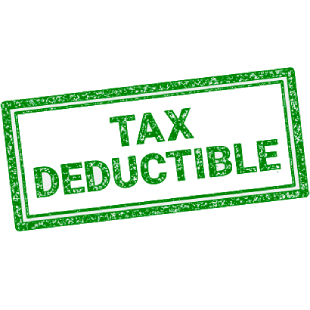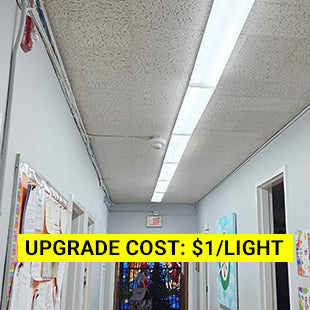Lowering Energy Costs with LED Lighting in Public Areas of Commercial Buildings
Reducing operating costs while maintaining the safety and comfort of tenants is one of the key responsibilities of a property management company. If you haven't already done so, switching to energy-efficient LED lighting in the public areas of your commercial properties is one cost-effective way to achieve both goals.
Benefits of LED Lighting in Public Areas
Public areas in commercial buildings, such as lobbies, hallways, stairwells, and parking lots, require lighting for safety and security purposes. Apart from parking lot lighting, which operates from dusk till dawn, these areas are often lit 24/7. Both types of lighting contribute significantly to high energy costs.
LED lighting offers a more energy-efficient alternative, one that can reduce your lighting energy costs by 50% to 80%. In addition to lower energy costs, LED lighting offers other benefits in public areas:
- Improved Lighting Quality: LED lights provide bright, even illumination that enhances visibility and safety in public areas. They also come in a range of color temperatures to create the desired ambiance.
- Reduced Maintenance Costs: LED lights have a much longer lifespan than traditional lighting, which means fewer replacements and maintenance costs. This can also help reduce the inconvenience caused by frequent light bulb replacements. And, when light fixtures require scaffolding or a bucket truck for re-lamping, the long life of LED lighting can cut down on equipment rental expenses as well.
- Increased Sustainability: LED lights are an eco-friendly lighting solution that reduces the carbon footprint of your building. By switching to LED lighting, you're doing your part to help the environment and promote sustainability.
How LED Lighting Lowers Energy Costs
Here's how switching to LED lighting in the public areas of your property can significantly lower energy costs.:
- Energy Efficiency: Traditional lighting wastes a significant amount of energy in the form of heat. LED lights convert more of their energy into light. This means that LED lights use less energy to produce the same amount of light, resulting in lower energy bills.
- Automatic Controls: LED lights can be easily integrated with automatic controls such as occupancy sensors, daylight sensors, and timers. This ensures that lights are only on when needed, reducing energy consumption even further. Lights can also be automatically dimmed, brightening only when motion is sensed—another way energy consumption can be controlled and reduced.
- Reduced Cooling Costs: The heat generated by traditional lighting can increase indoor cooling costs. LED lights produce less heat, reducing the load on your cooling system and saving energy.
Making the Switch to LED Lighting
To make the switch to LED lighting in public areas, you can either retrofit existing fixtures with LED equivalents or install all-new LED fixtures. Both options can result in significant energy savings. If your fixtures are in good condition and are architecturally important, retrofitting existing fixtures may be a more cost-effective solution, though there are good reasons to go with all-new fixtures as well, such as easier installation, integrated controls, and more compact designs.
When selecting LED lighting, look for those that meet industry standards for quality and energy efficiency, such as UL or ETL listing. If your utility provider offers incentives for installing high-efficiency lighting, you'll want to choose lights that are DLC listed; this means they are eligible for utility rebates and incentives.
It's also important to work with an experienced lighting supplier who can provide expert advice and ensure that the products you choose meet your needs. For instance, a supplier like ELEDLights can provide value-added services for free, such as researching available incentives and processing them for you, or auditing your current lighting and providing an upgrade plan that shows how much you'll save in energy costs.
The bottom line is that switching to LED lighting in public areas of commercial buildings is a smart investment for any property manager. LED lighting provides superior lighting quality, reduces maintenance costs, promotes sustainability, and most importantly, helps lower energy costs. Plus, you may be able to reduce the cost of that upgrade through utility incentive programs.
So, what are you waiting for? Start exploring your options for LED lighting today and start saving on your energy bills!
- Convert your existing fixtures to LED with retrofit lamps and kits.
- Upgrade the lighting in your parking lots with the latest in high-efficiency .
- Provide cost-effective safety and security at your building with high efficiency wall pack lights.
- Check out our rebate-eligible lights & see how much you could save on your lighting upgrade.
- Or put our lighting pros on the job. We'll get you a great result at a solid price.





